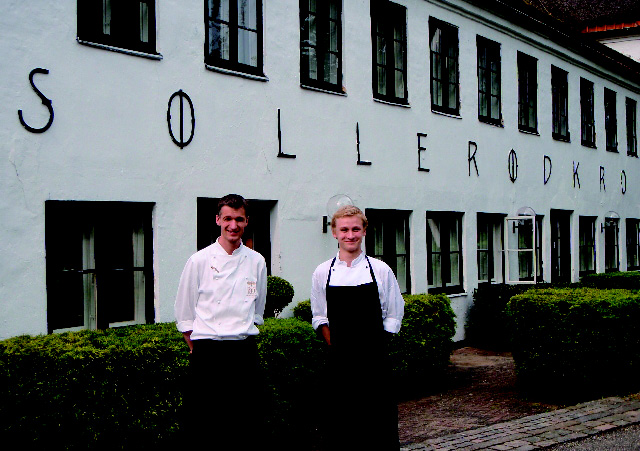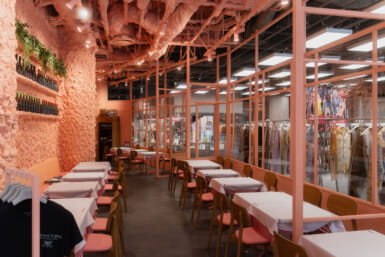by Alena Eckelmann
When thinking of food from Denmark, the pastry (‘Danish’) springs to mind first. Savvy Tokyoites might also be familiar with Café Daisy, a popular Danish restaurant in Roppongi, but most people will be surprised to know that Denmark, a small Scandinavian country with a population less than Tokyo (5.5 million) and an area four times smaller than Honshu Island (just over 43,000 km²), is actually a food paradise. In fact, just this year 14 Michelin stars were awarded to Copenhagen’s restaurants.
One of these is Søllerød Kro, a one-star Michelin restaurant in the north of Copenhagen. Its team, chef Jakob de Neergaard and manager Jan Restorff, are proud of the 332-year history of their eatery, which is often visited by the city’s gourmets. In June of this year, their young protégée and chef-in-the-making, Philip von Arenstorff, travelled all the way to Tokyo for a one week stint in Japan’s capital.
Only 18 years old, von Arenstorff has already been learning the trade at Søllerød Kro for three years. He was the first participant in a privately-sponsored chef exchange that will see a Japanese chef visiting Copenhagen in the autumn. This program is the brainchild of Niels Frederik Walther, the ambassador’s chef at the Danish embassy in Tokyo.
So, what is Danish cuisine like? Walther knows how to whet a diner’s appetite for this Nordic fare: “Danish food to me…is all about clear blue skies, ice, [and] clean water, as well as healthy and safe products. The main items on the menu are salmon and trout, herring, eel, cod, potatoes, cabbage and spring vegetables, wheat and barley like nowhere else, and as a small bonus we have great game, forest berries, and all sorts of herbs that are difficult to get elsewhere.”
Before arriving in Tokyo, von Arenstorff had only a very vague idea about Japanese food, but he came with an open mind and tasted everything that was put in front of him. It was not all play, though—he also worked some shifts at Tokyo’s kitchens. He spent a whole day each at the Kamogawa Grand Hotel in Chiba and at well known restaurant Nobu, where he learned how to make tempura and was initiated to the ins and outs of sushi preparation.
When speaking with the young chef about his impressions of Japanese food and Tokyo’s culinary scene, he said, “It is not possible to compare Danish food with Japanese food. Danish cuisine is not famous and ‘Danish kitchen’ has only developed over the last 20 years or so. It is safe to say that in Japan there are many classic Japanese dishes, but there is no real classic Danish dish.”
After his shift at the Kamogawa Grand Hotel, von Arenstorff went to a local ramen shop for a late night dinner with the kitchen staff. Having just stepped out of the grand hotel’s kitchen, he was surprised to find that in Japan there is not only a lot of variety and quality at the high end, but also at the low end. “In Denmark, cheap food is equalled with fast food and McDonalds. I was surprised that in Japan there is so much really good cheap food,” he said.
In summarizing his experience, von Arenstorff notes that, “Denmark is a small country and there is not much variety. This is true for the menu, too. There are not many items on the menus, and usually menus look the same throughout the country. Hence there are also not many opportunities to see new types of food and to experience new tastes and textures. However, here in Japan there is so much variety. I learned a lot in just one week and I got many ideas for what I would like to try in the future.”
It’s no wonder von Arenstorff plans to come back to Japan. And who knows? Maybe the next big culinary trend in Tokyo will be Japanese-Danish fusion food.
External Links:
Søllerød Kro restaurant
Café Daisy










